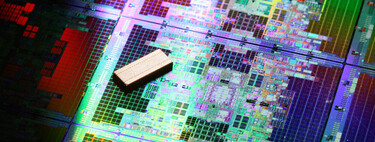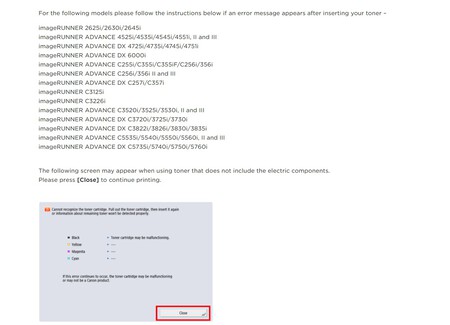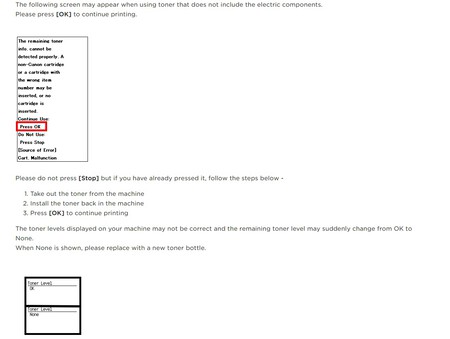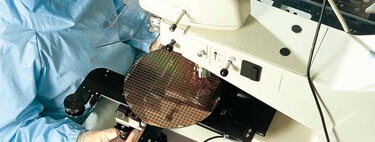Canon can’t put chips in its toners because of shortages and is teaching customers to skip genuine product checks

The semiconductor shortage, the same one that has been dragging the industry for two years, continues to have consequences in 2022. Given the difficulty in obtaining components, Canon has opted for a Solomonic measure: to dispense with chips that it usually incorporates in its printer cartridges. To muddle through now you’re teaching your customers how to skip messages that warn of the lack of parts that, among other things, guarantee that the product is original.
The notice has been released the users themselves via Twitter, where they assure that the toners lack the chips that prove that the product is from Canon and even report that the company itself is addressing its customers by mail to tell them how to avoid alerts.
The latest effect of component shortages
On its website, Canon acknowledges that, “due to the current global shortage of semiconductor components”, the company is encountering difficulties to get hold of some of the chips you use in your multifunction printer (MFP) supplies. “These components perform functions such as detecting remaining toner levels“, says the manufacturer. Another task of the chips is to confirm that the cartridge is a product made by Canon.

To maintain the flow of production and ensure “a continuous and reliable supply” of cartridges, the Japanese company has chosen to release them for sale without the semiconductor. The measure, he assures, is temporary and will only be maintained “until normal supply is resumed.” The multinational guarantees that print quality will not be adversely affectedAlthough you do admit that users will appreciate some changes that you are already reporting on.
“Certain auxiliary functions, such as the ability to detect toner levels, may be affected, “says the company, which explains to users how to act when the notice appears on the screens of their printers and even details the affected models.
- ImageRUNNER 1435i/1435iF
- ImageRUNNER 2625i/2630i/2645i
- ImageRUNNER ADVANCE 4525i/4535i/4545i/4551i, II and III
- ImageRUNNER ADVANCE C250i/350i/C351iF
- ImageRUNNER ADVANCE C255i/C355i/C355iF/C256i/356i
- ImageRUNNER ADVANCE C256i/356i II and III
- ImageRUNNER ADVANCE C3320i/3325i/3330i
- ImageRUNNER ADVANCE C3520i/3525i/3530i, II and III
- ImageRUNNER ADVANCE C5535i/5540i/5550i/5560i, II and III
- ImageRUNNER ADVANCE DX 4725i/4735i/4745i/4751i
- ImageRUNNER ADVANCE DX 6000i
- ImageRUNNER ADVANCE DX C257i/C357i
- ImageRUNNER ADVANCE DX C3720i/3725i/3730i
- ImageRUNNER ADVANCE DX C3822i/3826i/3830i/3835i
- ImageRUNNER ADVANCE DX C5735i/5740i/5750i/5760i
- ImageRUNNER C1325iF/1335iF
- ImageRUNNER C3025i
- ImageRUNNER C3125i
- ImageRUNNER C3226i
On its website, Canon clarifies how customers should act when they get the error message on their devices after inserting the new toner. For most of the affected models, it explains that the printer will not recognize the cartridge and you will receive an alert message. The user must close it.

The company also notes that the information about the ink level may not be correct or even change suddenly and go from 100 to 0%.

If the user has certain models (imageRUNNER C1325iF / 1335iF, imageRUNNER C3025i, imageRUNNER ADVANCE C250i / 350i / C351iF, imageRUNNER ADVANCE C3320i / 3325i / 3330i), the indications are somewhat different, although the information about the level can also be false.

There would be a third section, intended for owners of the imageRUNNER 1435i / 1435iF. As in the previous case, the company specifies to the client that he must press “Accept” or “Ok”. In case you did wrong in that first step and select “Cancel” or “Stop”, specify how to return to the point of origin and achieve the appropriate option. Another point in common with the rest of the cases is that Canon prevents that ink levels indicated by device may not be actual.

Main, UK printing service provider company, says on its website that since mid-December the Japanese manufacturer has been producing cartridges devoid of the component. The firm advances that the capacity of the devices and the quality of the printing will not be affected by the change, although certain functions may be, such as the detection of the ink level. In fact, the UK company informs its customers that you will no longer receive alerts to recharge cartridges and asks them to notify you directly by phone.

On its website for the Australian and New Zealand market, Canon guarantees in any case that non-chip toner cartridges will begin to be supplied, at least in those markets, as of February 2022. “It is a provisional measure”, he emphasizes. On the same page, it details the messages that the user will encounter when replacing the toner and explains step by step how to act.
😂 Semiconductor shortage leads to Canon selling toner cartridges without chips which usually identify them as genuine, so Canon now instructs customers on how to override the warnings for using “counterfeit” cartridges https://t.co/rqcmXckPFp
– Nils Adermann (@naderman) January 7, 2022
Canon is not the only firm that has been affected by the shortage of microchips, a scenario that in recent months has led to delays in shipments, increased production costs and particularly affected the automotive and mobile device industry.
Tesla, for example, has acknowledged that it has been forced to launch vehicles that were missing some of their USB ports precisely because of a shortage of chips. In the case of the Renault Arkana, even units without automatic folding mirrors are being delivered and customers are given the option of going to the dealer to have it installed when parts are in stock.
Reference-www.xataka.com